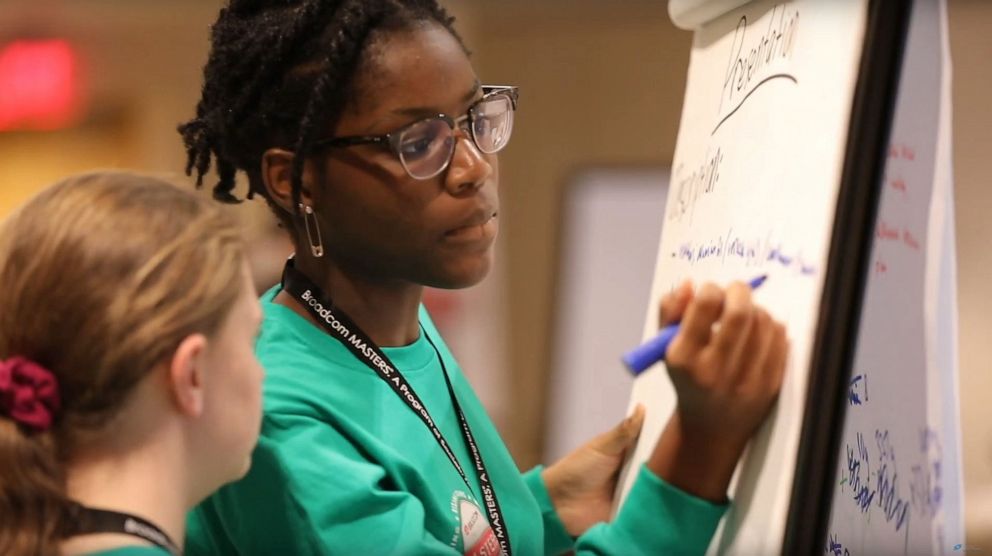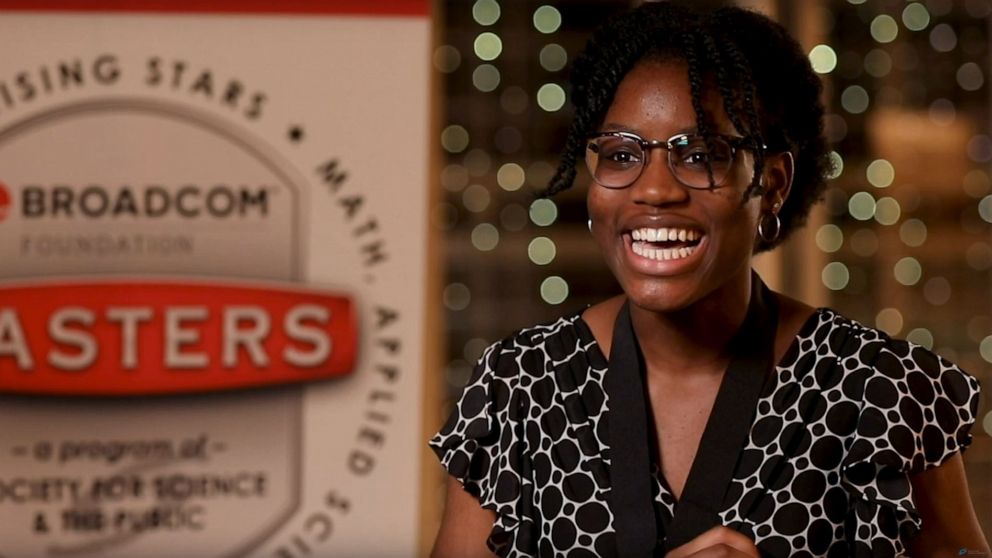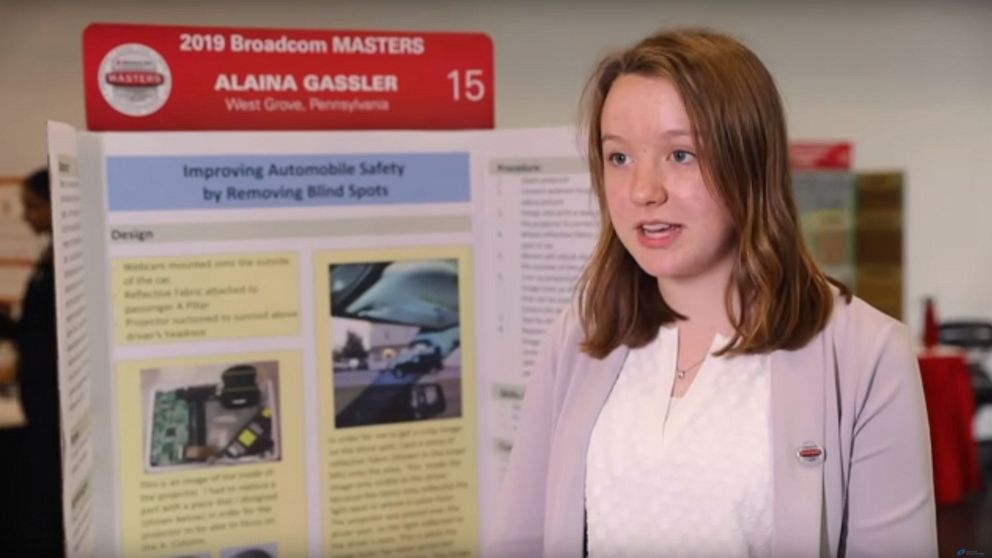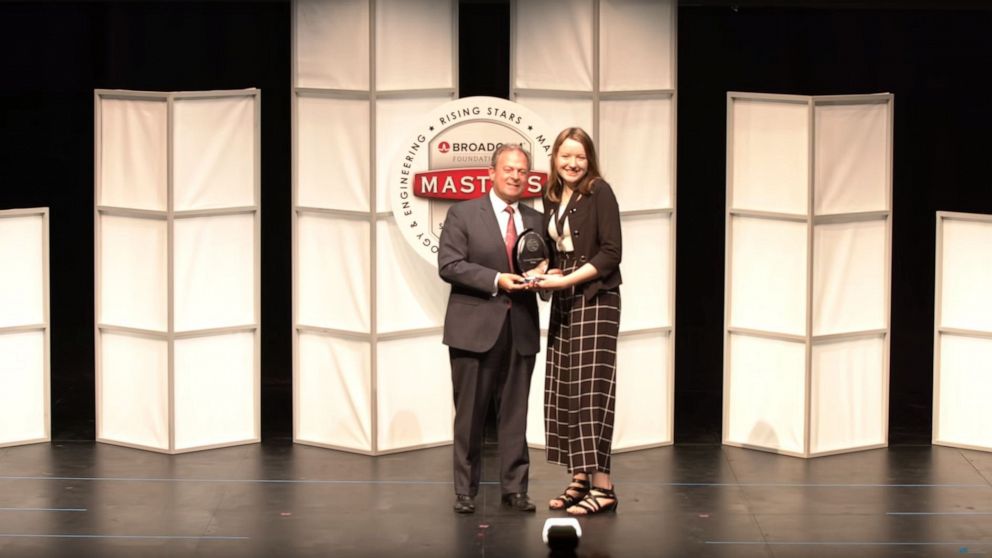Girls sweep all 5 top awards at national STEM contest for middle schoolers
At a national science and engineering competition for middle school students, girls took home all five top awards for the first time this year.
The Broadcom MASTERS, or Math, Applied Science, Technology, and Engineering for Rising Stars, is an annual competition run by the Society for Science & the Public in partnership with the nonprofit Broadcom Foundation.
The top winners were announced in Washington, D.C., on Oct. 29. Thirty finalists were chosen to come to the nation's capital for a week from a pool of 2,348 applicants in 47 states after having participated in local, regional and state science fairs.
Maya Ajmera, president and CEO of the Society for Science & the Public, told ABC News she is excited about the future of women in STEM. This year, there were 18 girls and 12 boys who made it to Washington for the competition.
"We are just so thrilled that the top five winners were girls this year," Ajmera said. "This is the first time in our history that it was a sweep for girls. It’s also the first time in our history that we had more girl finalists than boy finalists."

The science project that brought the finalists to the national competition only counted for 20% of their scoring -- during their week in D.C., they were also placed in teams and given STEM challenges to work on. They were then judged on a variety of skills like leadership, teamwork, problem solving and communication, and winners were selected by a panel of educators, scientists and engineers.
"We transform them from seeing themselves as a student who is interested in science and engineering to someone who sees themselves as a scientist and engineer," Paula Golden, president of the Broadcom Foundation, told ABC News.
Golden added that ensuring gender equity in the final pool of applicants for the competition has been a priority.
Alaina Gassler, 14, of West Grove, Pennsylvania, won the $25,000 Samueli Foundation Prize for her project on reducing blind spots in cars.
Gassler got the idea after seeing her mother's frustration with blind spots and looking up statistics on how many blind-spot accidents took place each year, she told ABC. She designed a system that included a webcam to show anything covered by a blind spot.

She said the competition made her consider a future career in engineering after realizing how much fun it is to help people.
We're going to be the next generation of scientists and engineers, and I feel like it's good to get started at a young age.
"I always thought that I wasn't able to help many people just because of my age, but I don’t want people to have their age hold them back," she said. "We're going to be the next generation of scientists and engineers, and I feel like it's good to get started at a young age."
Other top winners included Rachel Bergey of Harleysville, Pennsylvania; Sidor Clare of Sandy, Utah; Alexis MacAvoy of Hillsborough, California; and Lauren Ejiaga of New Orleans, Louisiana.
Ejiaga, 14, won the $10,000 STEM Talent Award sponsored by the Department of Defense for her research on how current levels of ultraviolet light from the sun because of ozone depletion impact plant growth.

Ejiaga told ABC she is interested in expanding her research and studying the impact of ultraviolet radiation on marine ecosystems. Her mother, Mayrie Ejiaga, said she cried tears of joy when her daughter won the award.
"It was a really beautiful and emotional moment," she told ABC News. "If she continues, she can help herself, help her family, help her community and help the world."
As the daughter of Nigerian immigrants, Ejiaga is the first woman of color to win a top award at the competition.
"The fact that I'm not only a person of color who won the award but the first woman of color is a big honor," Ejiaga said. "I hope it is inspiring to others -- not just women in STEM, but people of color who are women in STEM. There will be challenges, but you can still overcome them."

Ejiaga said the competition reaffirmed that she wants to continue her focus on science and eventually study medicine and work in anesthesiology.
"If you think there is an important problem you want to solve or there is something fun you want to do, you can still do it," she said. "There’s no need to feel intimidated by your peers from the past or the present — just think about the future and innovate from there."




